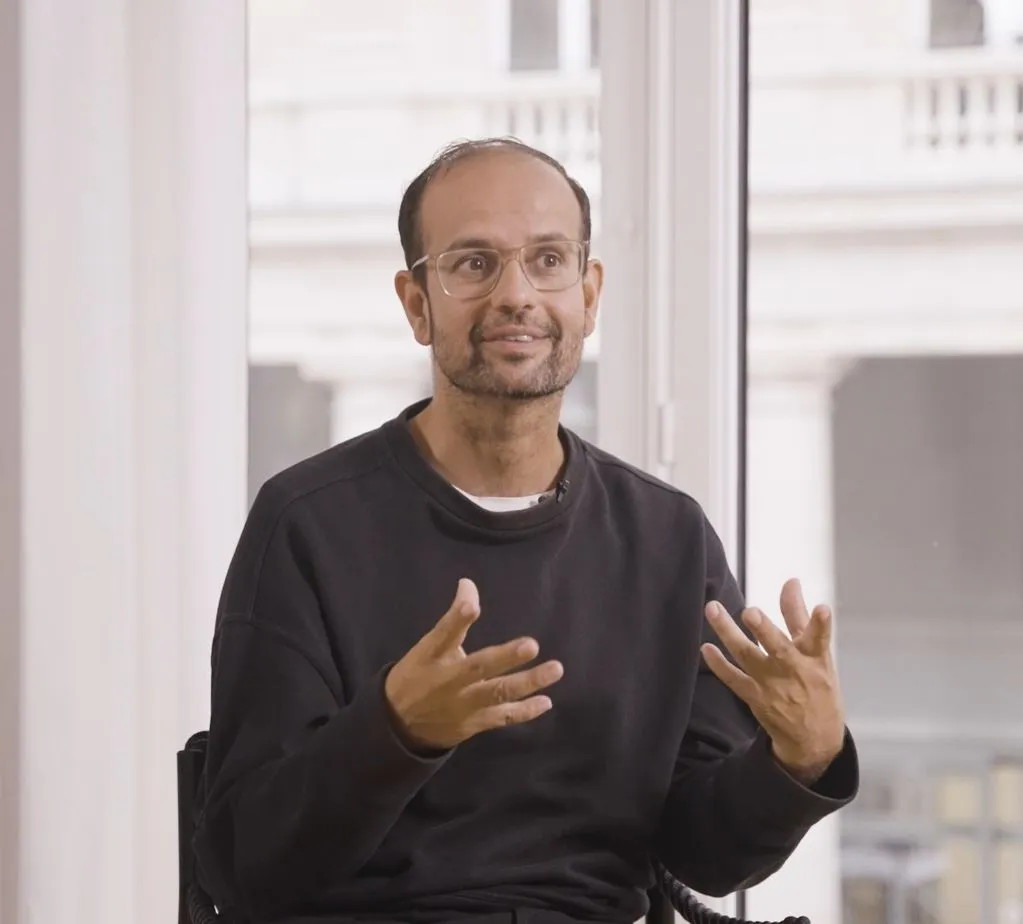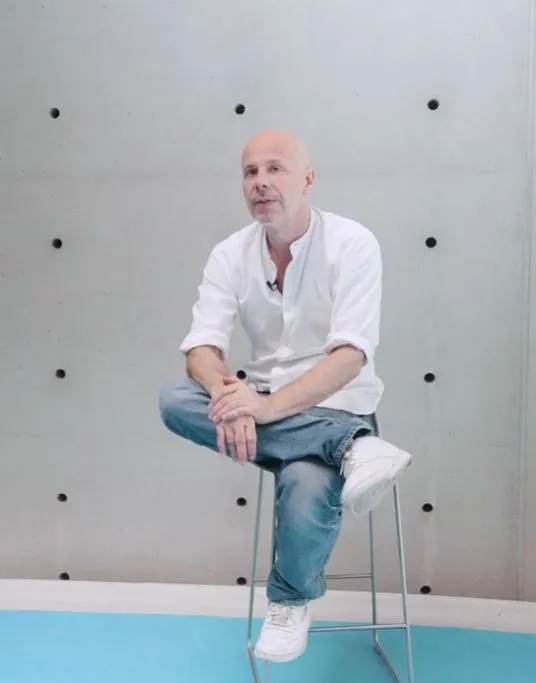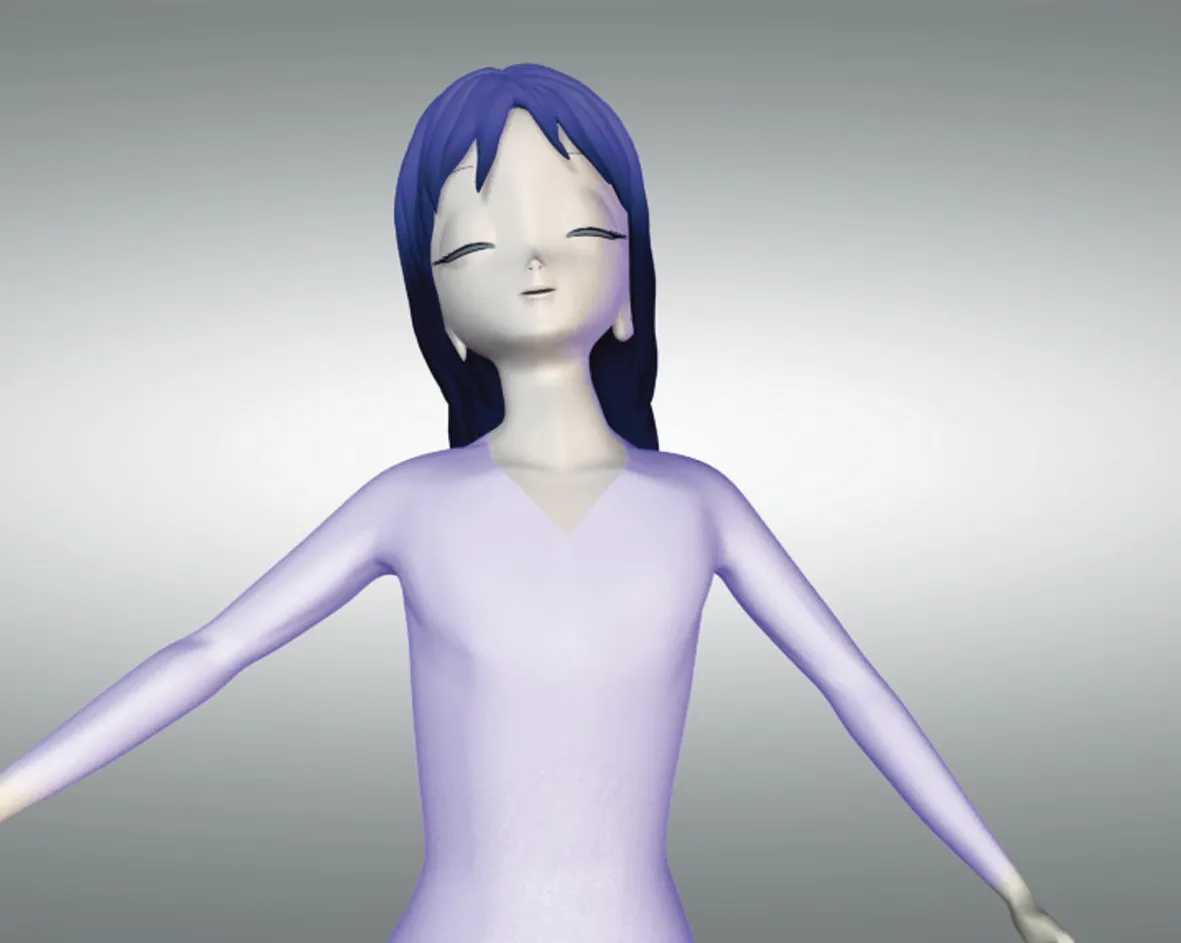Philippe Parreno

In the Rotunda, Philippe Parreno has invited the visitor to explore an archipelago of situations. He called on the memory, but also the senses: we can see it, of course, but also hear it, smell it, and somehow touch it—insofar as several of the elements (the cool-ness of the fan and the circulation of the air, the bite of the sun redirected by the heliostats) communicate directly with our skin.
His intervention in the Rotunda is a total work of art, designed to rattle the visitor, like a guitar whose strings are plucked all at once. At its centre is a projection on a giant LED screen of one of the artist’s most famous videos, Anywhere Out of the World (2000), in which Annlee becomes aware of her fictional character and the history of her creation in order to seek liberation.
The emancipation of the image is made concrete by the appearance of Annlee (2011), Tino Sehgal’s “constructed situation”: young actresses come to incarnate Ann Lee in the space, provoking an exchange with the spectators, blurring the border between reality and fiction. Their voices are carried by a mobile wall in the shape of a pavilion and by the blue carpet on the floor, reminiscent of Annlee’s previous incarnations at the Palais de Tokyo in 2013 and 2016. From this diptych emerges the idea that an image, a sign, a fictional character, can become a real person, just like the humans who interact with it. This is not the only non-human to come and “play” with the visitors: a “bioreactor” takes control over the lights, sounds, and movement at work in the Rotunda. This bioreactor, previously shown at the Tate Modern (2016) and at the Martin Gropius Bau (2018), has a “brain” of its own, whose evolution and actions are conditioned by the data captured outside—temperature, noise, humidity, light—which feed, excite, or dampen the bioreactor. The bioreactor is in fact composed of yeast—microscopic single-cell fungi.
In the same way, the Echo (Danny in the Street) device—initially produced for MoMA in 2019—created in collaboration with the musician Arca, the sound designer Nicolas Becker, and the AI designed by the company Bronze inhabits the space in a diffuse way: Arca’s composition is constantly amended by the artificial intelligence, itself fed by biometric and climatic data collected inside and outside the museum. Other protagonists affect the visitor’s experience: placed along the concrete wall by Tadao Ando, the heliostats collect the sunlight to project it into the Rotunda, which they help to redesign. A pile of artificial snow produces a sensation of coolness.
In this total environment, the human visitor becomes the patient, the receiver of actions formulated by different types of non-human actors: an image, a character, the sun, tiny elements, each of which in its own way emits signs that make up the exhibition, signs that the visitor sets out to interpret. The exhibition is the plaything of a non-human puppeteer, the scenographic script is written along the way by a gamelan that is both macrocosmic (the sun) and microcosmic (the yeast), with the ambition of redirecting the climatic race.
In a world where human behaviour seems to be predictable and modifiable by algorithms and artificial intelligence, works of art function as grains of sand in an apparently well-oiled machine. As philosopher Anna Longo says in the exhibition catalogue, “A work of art is the prophecy of its eternity, not its physical eternity, but its capacity to re-actualize in minds the knowledge of the sensible truth of a contingent singularity, of an ephemeral event which is already no more but which never ceases to happen, to be eternally generated in the mind as a truth independent of the flow of ordinary time and offered up as a destiny.”
The artistic experience makes the spectators open to the possible states of the world: the unpredictable character of the bioreactor’s reactions, of the weather and its impact on the behaviour of the heliostats, and the multiplicity of interrelations between Annlee and the spectators make it impossible to domesticate the conceptual or situational aspects of Philippe Parreno’s work. The piece initiates a set of possible scenarios, in the process of being written, never complete, of which the human visitors constitute one of the variables. By including the human actors as elements among others in a continuum, Philippe Parreno’s work reveals the deep dependence of his species on its environment, which, by considering it as an inexhaustible resource, has probably set in motion energies that are beyond it. It brings human visitors back to their own scale, inviting them to consider other forms of intelligence, agency, communication, and relationship to time.
With the participation of Solia Nivet, Stella Fouchard, Manon Le Bail, Lilya Barnard, Niamh Rousseau, Luna Depuygt Song, Gloria Tautu, Tsochun Atsok
And Margherita D’Adamo, Hanako Hayakawa, Louise Höjer, Nikima Jagudajev, Leah Katz et Lizzie Sells
Thanks to Balenciaga.


